It's About Time #2: Speaker Time Alignment
A series of blog articles about Time Alignment
22 March 2024
Technical Articles
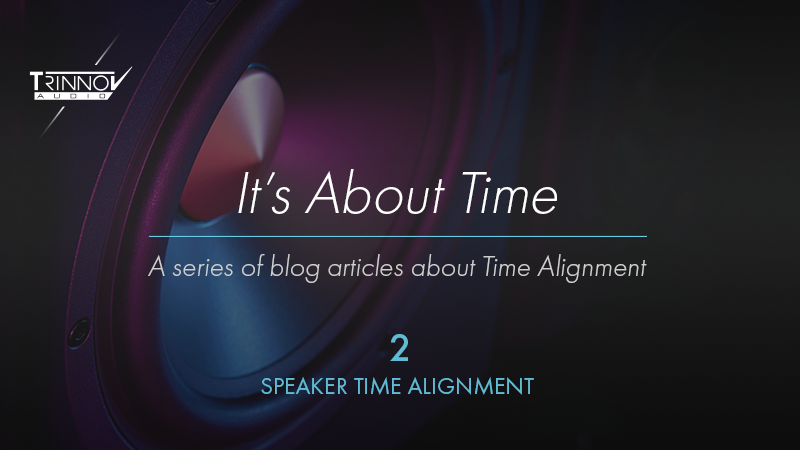
In the previous "It's About Time", we introduced the concept of time alignment and the basics of how our ears perceive sound in such a way that they are able to reproduce a center image with a stereo soundsystem.
In this article, we will focus specifically on speakers time alignment and why it is so important in hifi, home theaters, recording studios and commercial cinemas.
Time Alignment In Hi-Fi
Audiophiles have long understood the importance of having both speakers in their stereo systems at the same distance from the listening position. Some even go to the trouble of using laser measuring devices to make this distance measurement as precise as possible. Even small errors will cause the stereo image to shift toward the side of the image that arrives first.
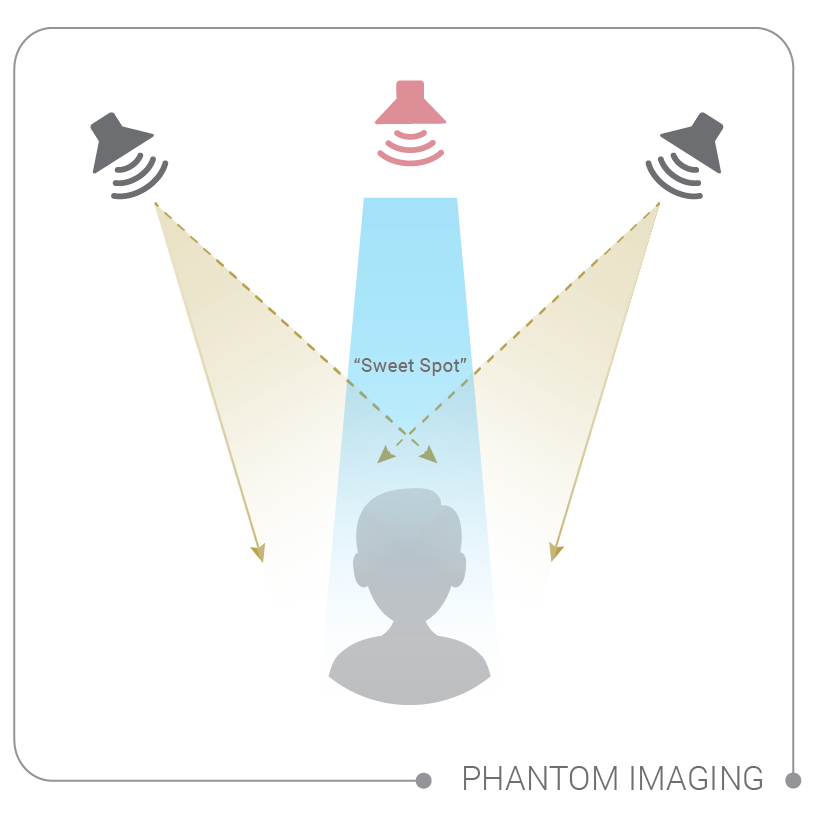
Because of our sensitivity to time arrivals, the “sweet spot” is actually quite small in stereo
Thus, a recording in which the singer should be dead center between the two speakers will have its image shifted and compressed toward whichever speaker is closer to the listener.
We hope that the “finger snap” thought experiment from earlier and the audiophile example mentioned here have established why having all speakers at precisely the same distance from the listener is important if spatial realism is important to your listening experience.
MULTICHANNEL SOUND
Does this mean that multichannel sound requires the listener to sit precisely in the center of a perfect circle of speakers? Although it might be imagined as the ideal configuration, fortunately, no.
Even the most basic AV receiver will have some ability to “time align” the sounds coming from different speakers. In this context, time alignment refers to the relatively simple matter of delaying the sound from all the speakers by the amount required to match the arrival time of the most distant (and therefore most delayed) speaker.
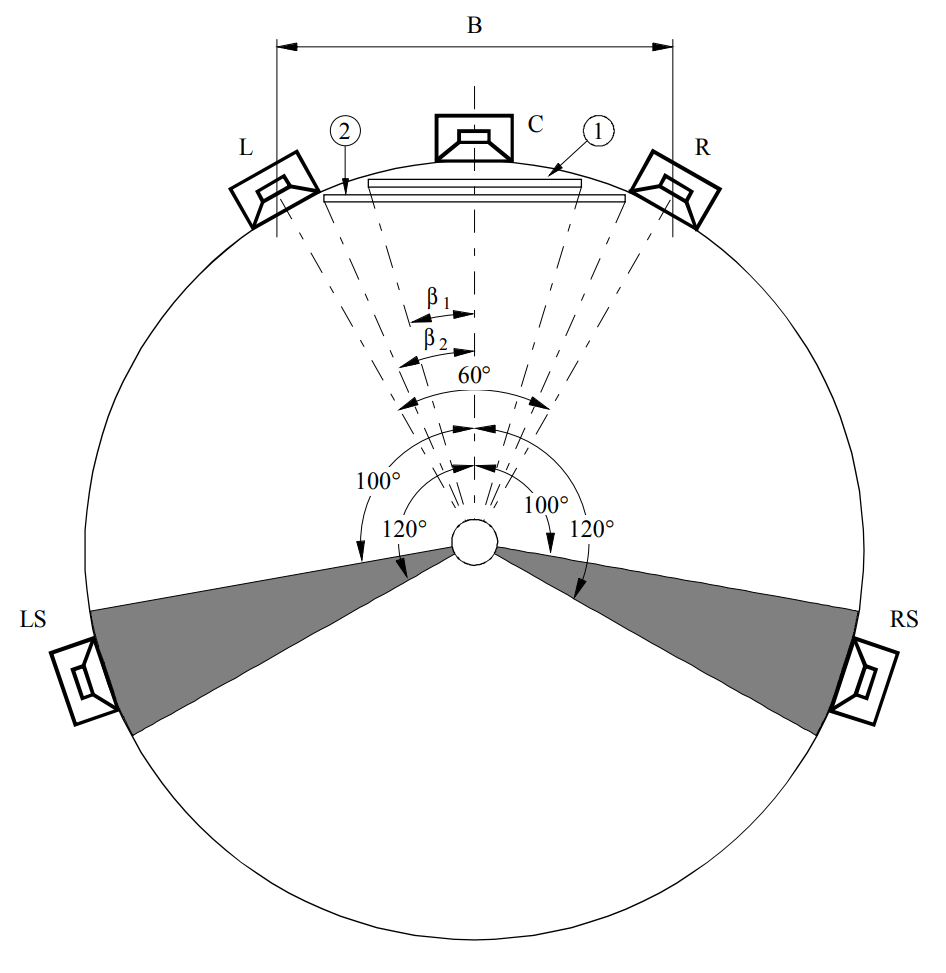
Reference surround loudspeaker arrangement by the International Telecommunication Union clearly shows a circle
By doing so, the subjective effect is to create that perfect circle of speakers virtually. Thus, if the speaker that is furthest away from the listener is twenty feet (≈6 meters) away, all of the other speakers are delayed by the electronics so as to simulate them being twenty feet away.
If you think about this, you quickly see that it can only work for a single, main listening position. However, someone sitting next to the lucky person in the main listening position (MLP) will still be significantly better off than had there been no time alignment at all. Just isn’t quite perfect for people not in the MLP.
This is the reason why there is only a single Reference position for any given Optimizer preset: Trinnov Optimizer handles this detail for you automatically and with great precision, based on whichever of the measurements you specified as the Reference position. The other, secondary measurements remain important for other calculations, but only the Reference position is used to calculate the various delays employed to time-align the speakers.

Time Alignment In Recording Studios
In recording studios, time alignment ensures that the sound engineer can preserve the artist’s creative intent without introducing spurious spatial shifts that could undermine the quality of the final mix. Even in a “simple” stereo system, imaging can usually be improved by ensuring that the acoustic arrival times are perfectly aligned (which can be difficult to achieve using only a tape measure). However, few stereo systems have any provision for doing so beyond simple speaker placement. Needless to say, Trinnov stereo processors perform this compensation easily and with great accuracy.
In Home Theaters
In basic AV receivers, one normally estimates the distance from each speaker to the listening position with a tape measure, and then enters either the distance or the delay (at an approximation of 1ms per foot or per 30cm of distance). These products are usually limited to steps of about one full millisecond (recall that we can perceive image shifts with as little as one-tenth of a millisecond). While lacking precision, it is still much better than doing nothing. In immersive audio systems, all the major formats recommend time alignment of all speakers since the ones directly above you and to your sides are almost always going to be far closer to you than the screen channels.
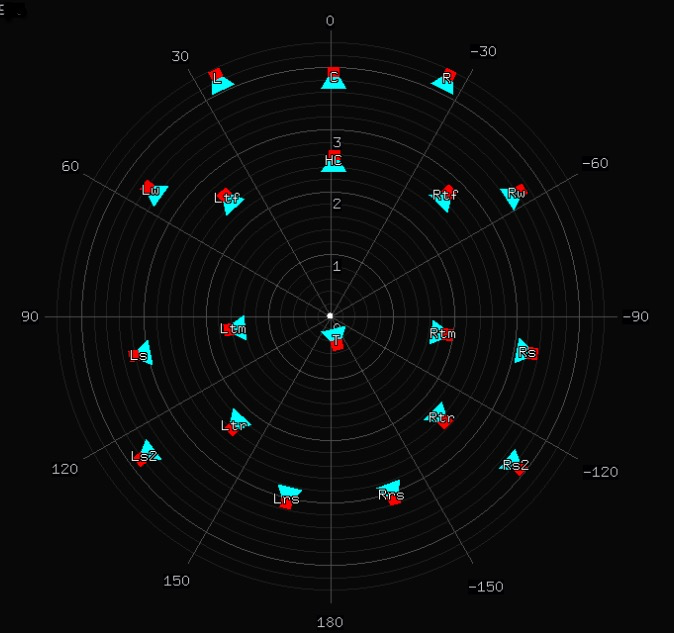
Home Cinema speaker positioning
If you heard them first as a result of their proximity, your attention would be drawn away from the screen toward the nearest speakers – and the artistic illusion would be lost.
In Commercial Cinema
Interestingly, in commercial cinemas, the Society of Motion Picture and Television Engineers (SMPTE, pronounced “simp-tee”) does not include recommendations either for or against time alignment, presumably because it only works perfectly in a single seat in a theater with hundreds of seats. However, it is extremely common in commercial cinemas to at least delay the surround channels so as to ensure that people hear the screen dialog before the surround effects, keeping their attention on the screen (where the filmmaker wants it).
We at Trinnov operate in all these markets: Consumer/Professional Stereo, Consumer/Professional Multichannel and Commercial Cinemas. Our deep experience has led us to a different conclusion as regards commercial cinema calibration. We strongly recommend speaker time alignment for the theatrical Reference “Primary Listening Position” (PLP) that is two-thirds of the way back from the screen and dead center from side-to-side in the theater. The difference is quite striking:
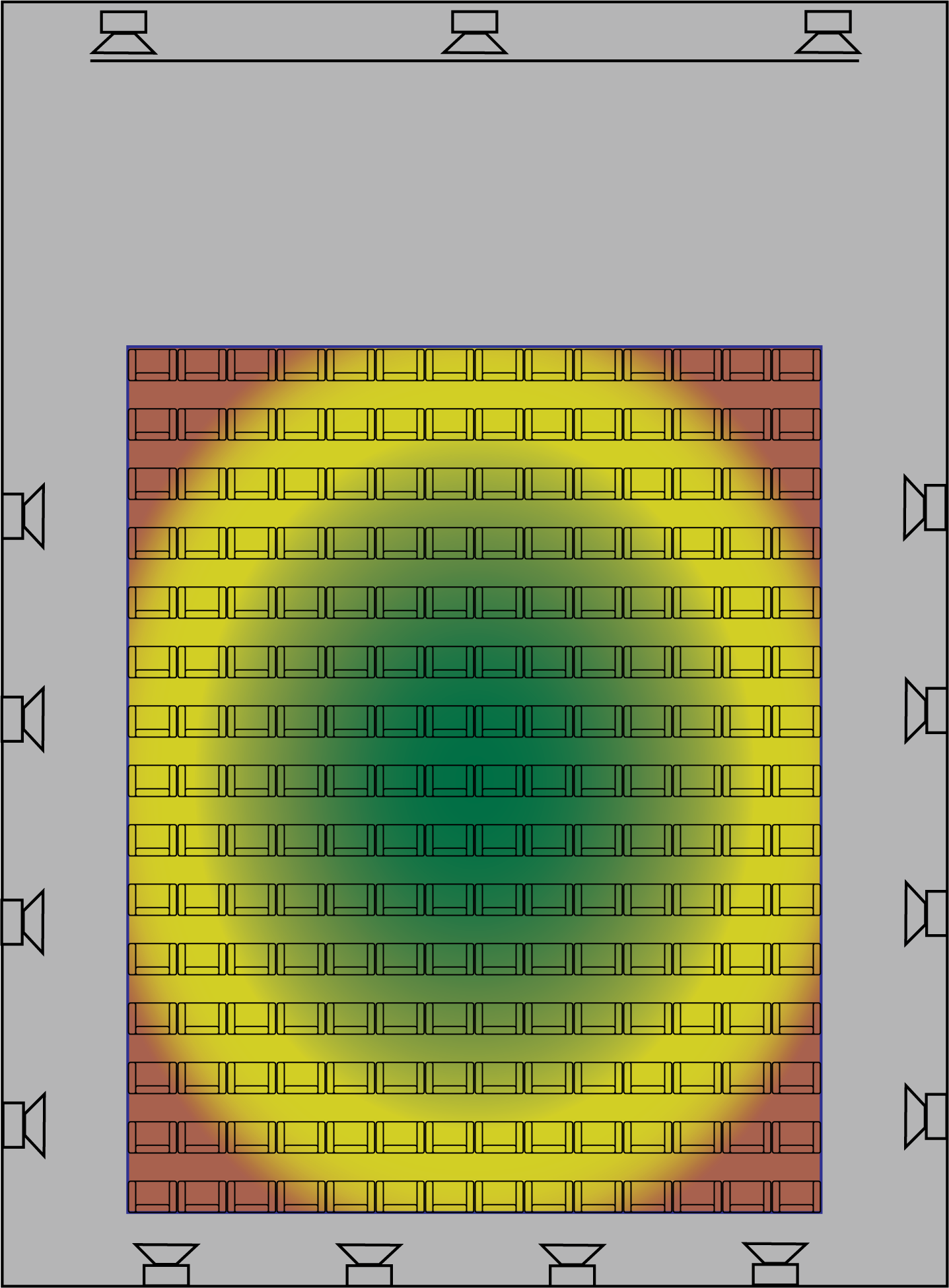
Listening zone with time alignment
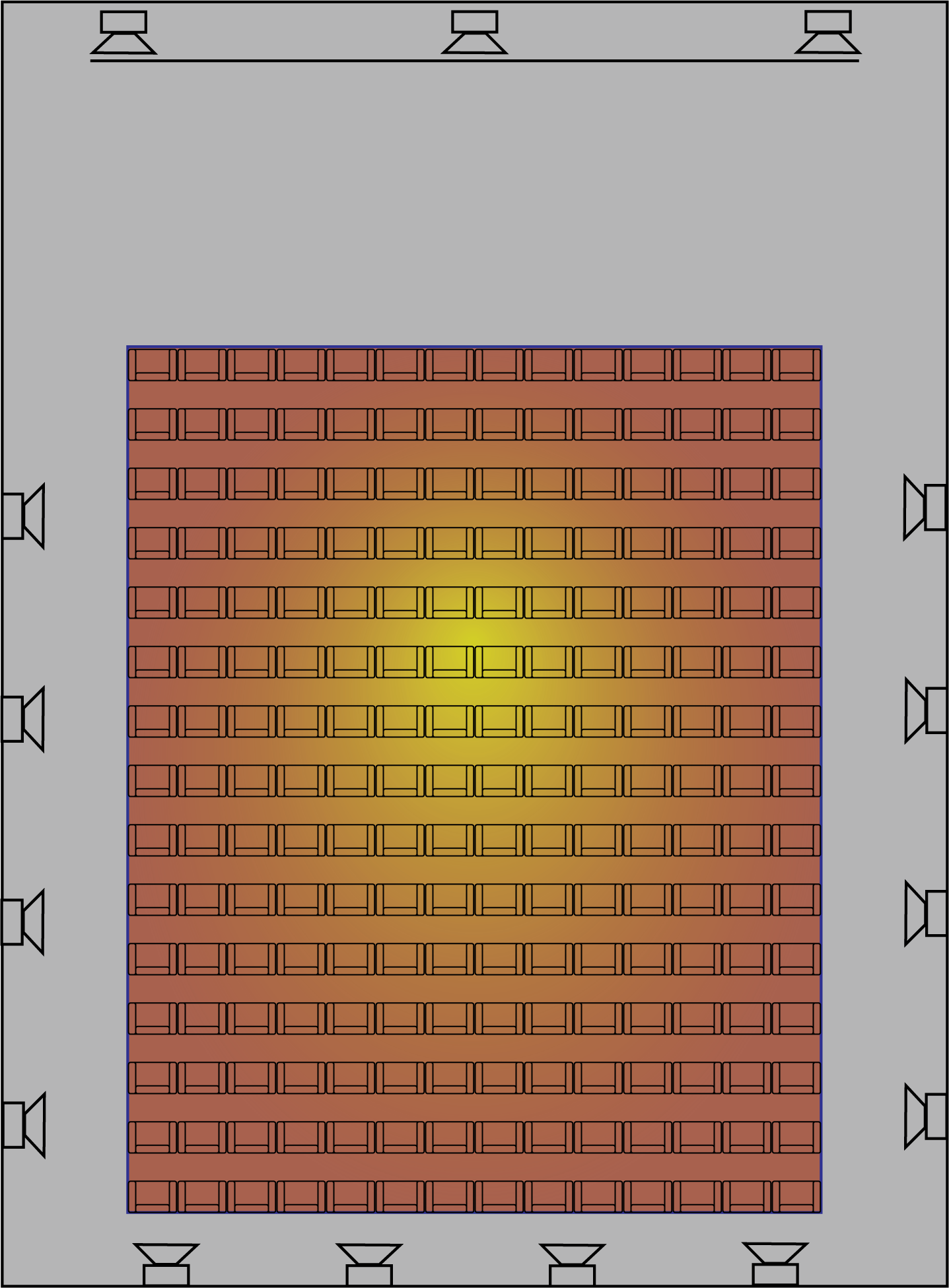
Listening zone without time alignment
With time alignment (left), the central seating area is perfect at one seat and remains quite good for all the seats around that location. The worst seats are – as you would imagine – in the corners of the room.
Without time alignment (right), it is possible that there may not be a single seat in the house that is correct. Some seats will be better than others, but they can easily range from mediocre to bad in terms of time alignment. Improving time-alignment and the resulting spatial perception for one seat does not negatively affect the result around that location; to the contrary, it improves it for everyone in the vicinity as compared to having no time-alignment.
Our commercial cinema processors do this quickly and automatically during calibration. As with home cinemas, there may be only one seat that is perfect; however, the experience is significantly improved for everyone anywhere near that position, which includes the vast majority of the available (and desirable) seats. The only seats where it might be argued that the listening experience could be made worse are in the front-most rows of seats – which are the last ones occupied since they are too close to the screen for comfortable viewing.
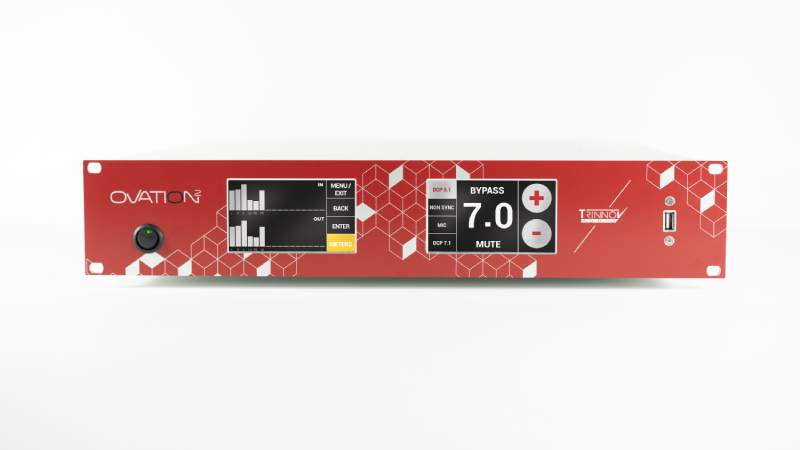
Our latest cinema processor - Trinnov Ovation2
Key takeaways
We saw the application of time alignment in several environments such as in Hi-Fi, recording studios, home cinemas and commercial cinemas. One thing they all have in common is that they all benefit from time alignment and sound much better to the listener. Even though time alignment is in reference to one point in the room (the Main Listening Position), the other seats are still far better off with time alignment than they were before.
Stay tuned for the next episode of It's About Time covering drivers alignment this time.
Related articles:
|
|

